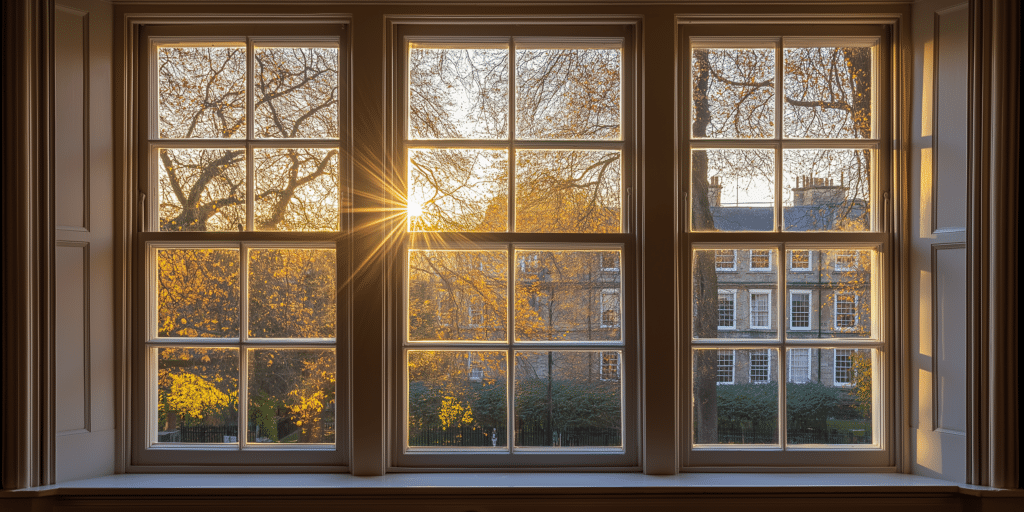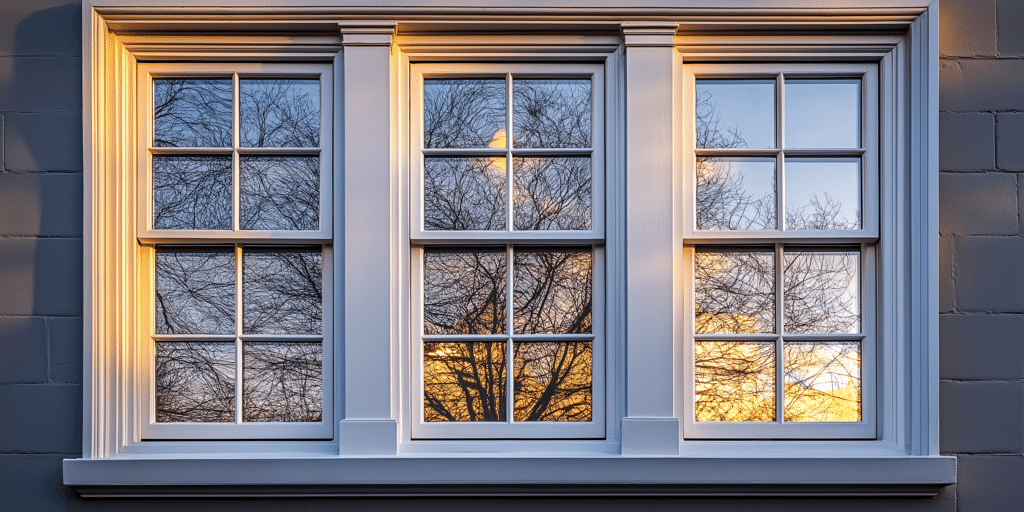Historical Significance of Double-Hung Sash Windows

The double-hung sash window has a rich history, particularly in Georgian and Victorian architecture. These windows were originally designed to improve ventilation in homes during the 17th and 18th centuries. The ability to open both the top and bottom sashes provided a practical solution for air circulation.
While maintaining their classic appearance, modern double-hung tilt sash windows incorporate advanced materials and mechanisms that enhance durability and ease of use. Experts often recommend these windows for renovating historical properties because they maintain architectural integrity while offering modern energy efficiency benefits.
Understanding the Tilt Mechanism
The tilt mechanism is a key feature that distinguishes double-hung tilt sash windows from other window types. The mechanism allows the sashes to tilt inward, providing easy access to the exterior glass surfaces for cleaning.
This feature not only simplifies maintenance but also enhances safety by allowing homeowners to clean their windows from inside the home, reducing the need for ladders or external cleaning services. One expert noted that this feature is particularly valued in multi-storey buildings, where ease of cleaning from the inside can be a significant convenience.
Materials Used in Double-Hung Tilt Sash Windows
Double-hung tilt sash windows can be constructed from various materials, each offering different benefits. The most common materials include wood, uPVC, aluminium, and composite materials.
Wood offers a traditional look but requires regular maintenance, while uPVC is low-maintenance and energy-efficient. Aluminium provides strength and durability, making it ideal for larger windows, while composite materials offer a balance of aesthetics and performance. Professionals often cite the durability of modern double-hung windows, especially those made with aluminium and composite materials, as these can last over 20 years with minimal maintenance.
Energy Efficiency and Insulation

Energy efficiency is a crucial factor in modern window design. The dual sashes and tight seals help reduce heat loss and prevent drafts, improving the overall thermal performance of the home.
Double or triple-glazing options further enhance insulation by reducing heat transfer, which is particularly beneficial in colder climates. Moreover, the use of argon gas filling and low-E coatings can improve the energy efficiency of double-hung windows by an additional 15-20%, making them a top choice for energy-conscious homeowners.
Installation Process and Considerations
Installing double-hung tilt sash windows requires careful planning and expertise. The process typically involves measuring the window openings, preparing the frame, and securely fitting the sashes into place.
Proper installation ensures the windows operate smoothly and maintain their energy efficiency while also preventing issues such as drafts or water leaks. It is recommended that installers with experience in handling double-hung windows be chosen to ensure that all components, such as the tilt mechanisms, are properly aligned and functional from the start.
Maintenance and Care
Maintaining double-hung tilt sash windows is relatively straightforward due to their tilt feature. Regular cleaning of the glass and checking the seals for any signs of wear are essential to keeping the windows in good condition.
The ability to tilt the sashes inward allows for easy access to both sides of the glass, making it possible to clean the windows without removing them from the frame. Additionally, proper maintenance can extend the life of these windows by ensuring that the tilt mechanisms and seals remain functional and airtight, preventing potential issues like condensation or mould growth.
Safety and Security Features

Safety is a top priority in window design, and double-hung tilt sash windows are equipped with various features to enhance security. These windows often come with locking mechanisms that secure the sashes in place, preventing them from being opened from the outside.
Additional options, such as reinforced glass and child safety locks, can further enhance security, making these windows a safe choice for families. Experts highlight that these features are particularly beneficial for homes with young children, allowing ventilation without compromising safety.
Customisation Options
Double-hung tilt sash windows offer a wide range of customisation options to suit different architectural styles and personal preferences. Homeowners can choose from various colours, finishes, and hardware styles, as well as options for glazing and decorative elements.
Customisation allows homeowners to match their windows with the overall design of their home while also selecting features that enhance functionality, such as soundproofing or UV protection. The flexibility of design also makes these windows suitable for both contemporary and historical homes, allowing for a blend of modern performance with traditional aesthetics.
Comparing Double-Hung Tilt Sash Windows with Other Window Types
When selecting windows for a home, it’s important to compare different types. Compared to casement or fixed windows, double-hung tilt sash windows offer greater flexibility in ventilation and easier maintenance.
The combination of aesthetic appeal, functionality, and ease of use makes them a versatile choice for various architectural styles. Furthermore, their ability to provide better airflow and more secure ventilation options—such as allowing the top sash to be open while keeping the bottom sash closed—sets them apart from other window types.
Cost Considerations and Value for Money

Cost is a significant factor when choosing windows for a home. The price can vary based on materials, size, customisation options, and installation complexity.
While the initial cost may be higher than other window types, the durability, energy efficiency, and low maintenance requirements can lead to savings over time, making them a cost-effective investment. For example, though the average installation cost ranges from £400 to £800 per window, the energy savings and longevity of these windows make them a smart investment over time.
Final Thoughts
Double-hung tilt sash windows are a blend of traditional design and modern innovation. Their combination of aesthetic appeal, energy efficiency, ease of maintenance, and safety features makes them a popular choice for homeowners.
By considering factors such as material, customisation, and installation, homeowners can choose the best double-hung tilt sash windows to meet their needs and enhance their home’s comfort and security. The added benefits of reduced energy costs and increased property value further highlight their practicality and appeal.
Double-hung tilt sash windows perfectly balance form and function, making them an excellent choice for any home. Whether you’re renovating a historical property or building a new home, these windows provide the benefits of modern engineering while preserving the charm of traditional design.




